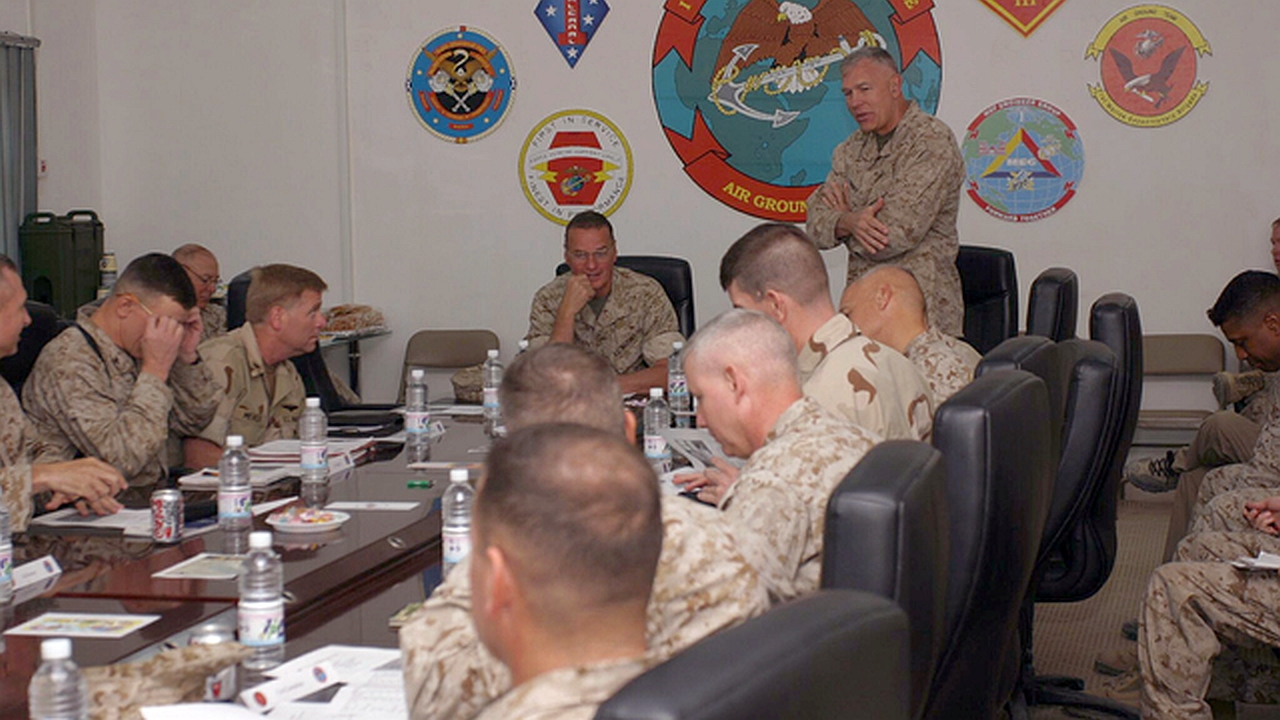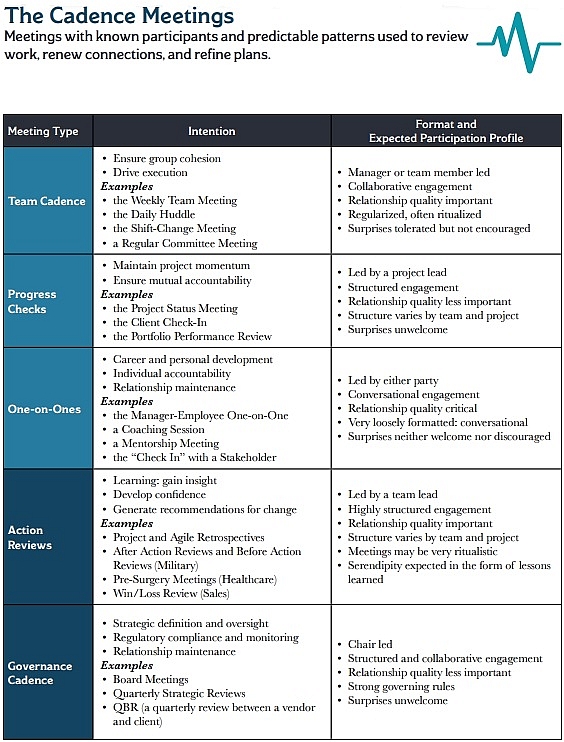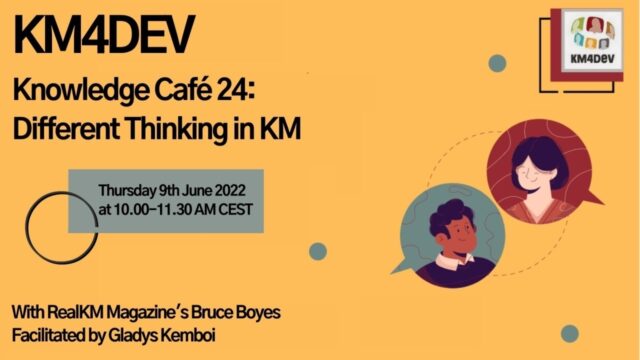
Organization Management Rhythm (part 1.3): The Cadence Meetings
This article is part 1.3 of a series of articles on Organization Management Rhythm.
The Cadence Meetings are the regularly repeated meetings that make up the vast majority of the meetings held in the modern workplace. These meetings involve existing groups executing on known work. They maintain and shape the organization’s current state.
1. Team Cadence – Weekly Team Meetings, Shift Change Meeting, Regular Committee Meeting
a. Answer questions
i. Keeps teams aligned to a common goal
ii. What has been done
iii. What has changed
iv. What to focus on next
b. Purpose
i. Ensures group cohesion
ii. Drives execution
iii. Clarifies immediate steps
c. Work outcomes
i. Clarifies duties
ii. Solves problems
iii. Visibility into challenges
iv. Documents decisions and actions
d. Human outcomes
i. Increased trust
ii. Connection to mission
iii. Sense of belonging
iv. Sets temp of urgency
2. Progress Check – Project Status, Client Check-In Sprint Demo
a. Answer questions
i. Keeps teams aligned to a common goal
ii. What has been done
iii. What has changed
iv. What to focus on next
b. Purpose
i. Clarifies duties, solves problems, visibility into challenges, documents decisions and actions
c. Work outcomes
i. Maintain momentum and ensure mutual accountability
ii. Reassurance about the project and momentum
3. One on ones – Manager One on One, Coaching Sessions, The Check In
a. Answer questions
i. What is happening with you/your work?
ii. What do I need to understand?
iii. How can I help
b. Purpose
i. Career and Personal development
ii. Individual accountability
iii. Relationship maintenance
c. Work outcomes
i. Clarify about progress made/expectations/person’s intentions
ii. Actionable advice
d. Support/reassurance
i. Clearing one’s head/getting it off one’s chest
ii. New Ideas and opportunities to consider
4. Action reviews – Retrospectives, After Action reviews, Win/Loss Review (Sales)
a. Answer questions
i. What was our plan?
ii. How did it go?
iii. Where did it deviate?
iv. What did we learn?
v. What should we change going forward?
b. Purpose
i. Learning/gaining insight
ii. Develop confidence
iii. Create recommendations for change
c. Work outcomes
i. Process improvement
ii. Increased team efficiency
iii. Improved operational performance
d. Human outcomes
i. Shared commitment to quality
ii. Continuous learning and skill improvements
iii. Connection to the mission and each other
5. Governance Cadence – Board Meetings, Quarterly Strategic Reviews, Quarterly Business Review
a. Answer questions
i. Performance during a set time frame, what changed what needs intervention
b. Purpose
i. Strategic goals, definition, and oversight; Regulatory compliance and monitoring, Maintenance of relationships and organizational activity
c. Work outcomes
i. Finalized decisions
ii. Confirmation of strategic priorities
iii. Legal oversight
iv. Operational advice
v. Access to external resources
d. Human outcomes
i. Finalized decisions
ii. Confirmation of strategic priorities
iii. Legal oversight
iv. Operational advice
v. Access to external resources

Next part (part 1.4): The Catalyst Meetings.
Acknowledgements: Thank you to Tomi Antill, Keith Davis, Elise Keith from Lucid Meetings, JFHQ-C Leadership, and Kendra Albright from Kent State University, without whose support this series would not have been possible.
Header image source: U.S. National Archives, Public Domain.






